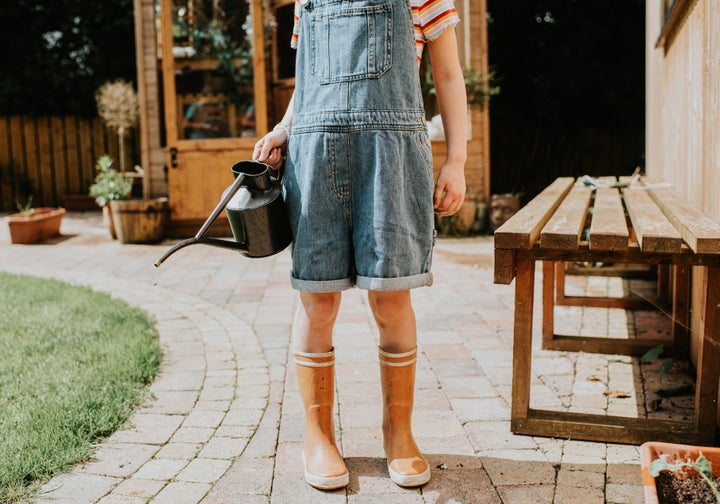
Here are some things I probably have in common with your garden: 1) I’m pretty fussy about my food, 2) I do not enjoy slugs, and 3) I cannot wait until this heatwave is over.
Whether you’re looking at a deflated lawn or some drooping veg plants right now, chances are your greenery is struggling to manage in the heat. After all, recent thunderstorms aside, they probably haven’t seen consistent rainfall in weeks (experts reckon rainwater is the best possible option for your plants).
And if you’ve got potted plants, I’m afraid the tough news continues. Not only should you probably move your beloved balcony box ASAP, but you might just need to check (or even change) the pot they’re in immediately.
Here’s why, and what you can do about it.
Potted plants are at higher risk of drying out
There’s a reason you should move your potted plants into the shade when it’s sunny. They dry out faster than their planted seed siblings, because “The small soil space and the construction of the pot mean the container stores very little moisture.“
However, not all plant pots are created equal. Some retain heat more than others, making them especially tough on your soil during a heatwave.
Terracotta (or clay) plant pots are great at staying warm, which is why they were used for that viral TikTok candle/plant pot heating hack (side note – firefighters warn not to make these, because they’re easy to knock over and can cause a fire).
They’re also pourous, meaning they absorb water and can appear to “drink” it. This can actually be handy for typical UK weather, as they can prevent oversaturation.
But in a heatwave, especially if they’re unsealed, the material can cause significant water loss. “It allows for quick evaporation, meaning plants will dry out much more quickly,” says Homes & Gardens.
Right. So what can I do?
One option is to consider replacing them with a thick, light-coloured alternative – the larger the better.
Another simple solution is to start clustering your potted plants together to provide extra shade – or you can double-pot your plants (making sure there are drainage holes in both layers), to help reduce water loss.
You can also buy terracotta sealant to help lock the moisture in. And if you’re keen to keep your existing pots, you should keep a close eye on the soil and water in larger bursts rather than occasional sprinkles.
As Julia Lamberth, owner of The English Potted Plant Company, told Gardening Etc., “They look great, but plants in terracotta pots need to be watered more frequently than other pots because terracotta is a porous material – so try watering plants early in the morning and give each pot a good soak every few days as opposed to a sprinkling every day.“
Consider setting up a self-watering system for your terracotta plant pots, too.
Ah, the joys of this roasting weather...